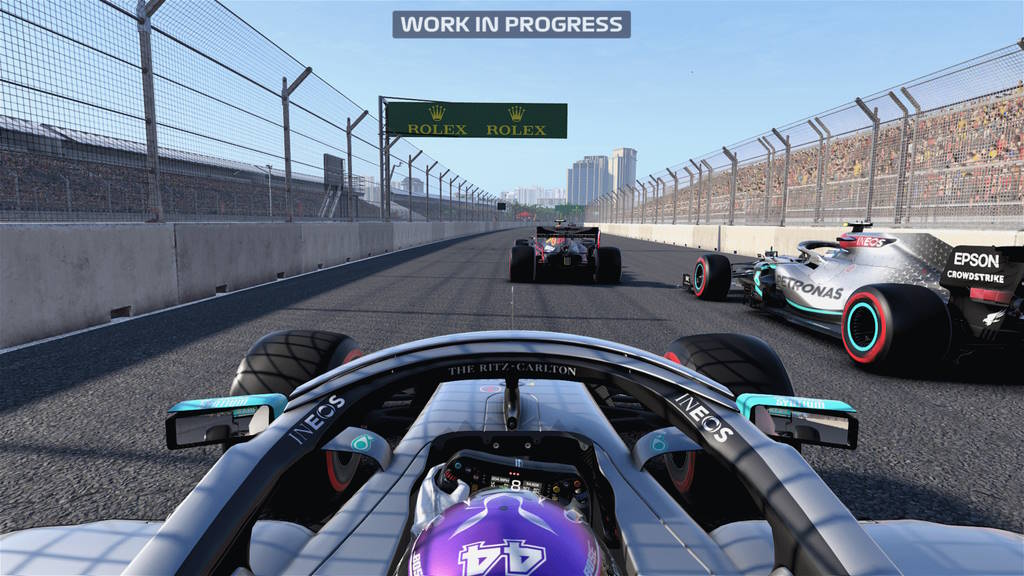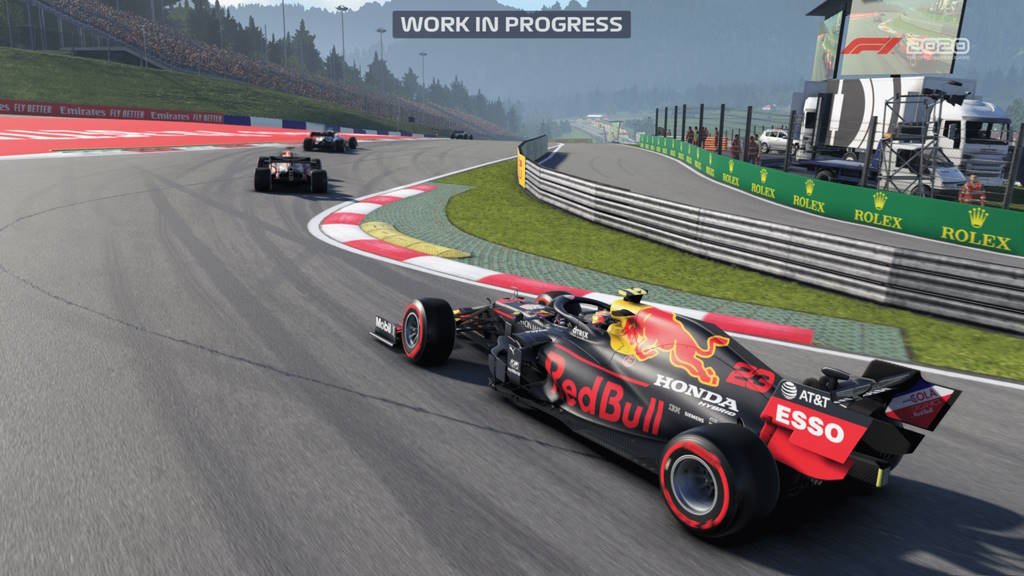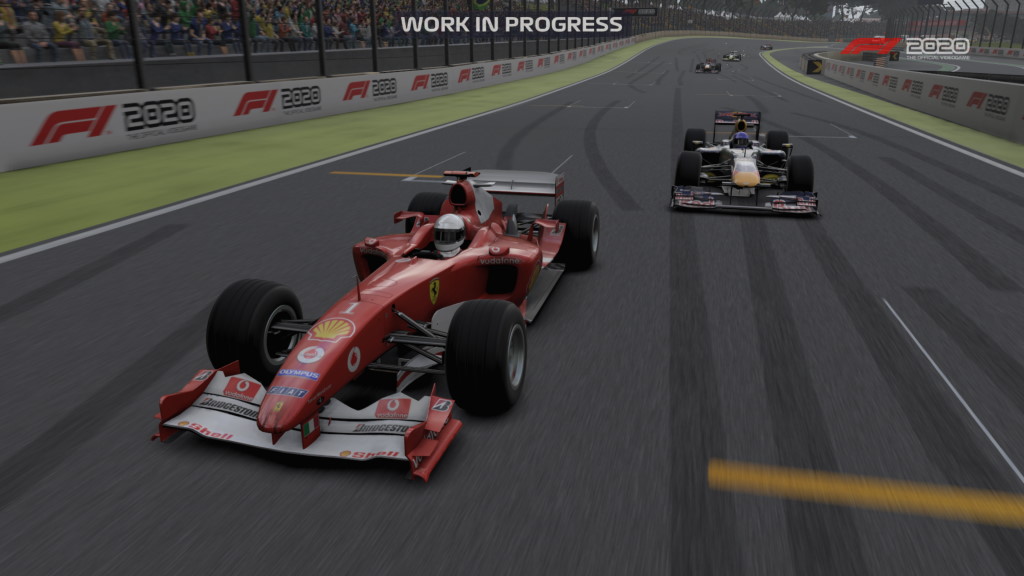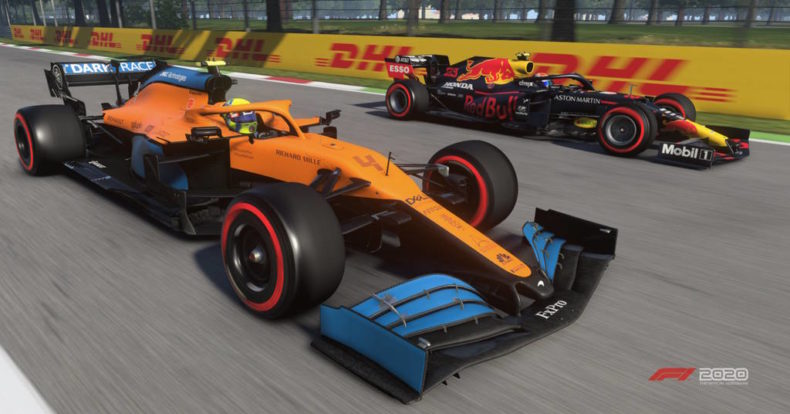Now, you probably know that I’ve played F1 2020 already, having played a preview build recently, and what I played was excellent. That was limited to only a handful of tracks, however, and now Codemasters has given us access to every track, updated cars, and even classic cars. And honestly, it’s already feeling better than ever.
Right from the start, fans of the recent Formula One games will feel at home in this latest game. The presentation is largely the same and the handling feels similar, but a few things have been tweaked. The ERS (Energy Recovery System) no longer requires extreme micromanagement during the race, instead only needing a press of the left bumper (or whatever button you assign, especially if you’re using a wheel) to activate the “overtake” function. This gives drivers a bit of an extra boost, as long as there is charge available.

The handling model feels even more realistic than before, too. There’s a greater sense of connection between the player and their car, so you can really feel when your tyres are wearing out and losing their grip through corners. If your car is damaged, the resulting effects on handling feels much more pronounced than in last year’s game. Having played a lot of F1 2019, especially in the last two months, I really have noticed these (sometimes subtle) changes.
What is perhaps the best tweak, though, is in the racing itself. Specifically, how much more lifelike the racing is now. The AI will fight for position more than ever before, weaving to break the tow as cars behind get into the slipstream, trying its hardest to out-brake rivals into corners, and generally making it much harder to take and keep positions, throughout each race. That doesn’t mean it’s become an arcade game and you’ll be swapping places every minute, in fact, overtakes are about as common as they are in the real thing.
The top three teams, Mercedes, Ferrari, and Red Bull are usually at the front, their extra power and engine quality allowing them a slight edge over the other teams. There’s less disparity between the rest of the field, this year, meaning that there are more battles throughout the grid. During races of 25% length or greater, packs begin to form as the race develops and they’ll each have their own little battles as they chase the top ten places. For those unfamiliar with the rules of F1, only those finishing in the top 10 receive points. And points mean prizes, as the old saying goes.

With the updated season just weeks away now, I couldn’t help but jump right into Alexander Albon’s Red Bull and head to this year’s opening venue: Austria’s Red Bull Ring. Starting just behind teammate Max Verstappen, I found myself unable to pass as he drives just like his real-life counterpart. He takes unorthodox lines through corners, goes for gaps that just don’t seem possible and generally injects a little chaos into any F1 grid. Whether that’s intentional or a happy accident, I don’t know, but it’s appreciated nonetheless.
After that, I took Lewis Hamilton’s Mercedes for a spin around the new Hanoi venue. This tricky street circuit makes for some tense racing, but its long straights allow plenty of overtaking. I managed a rather clumsy, but no less spectacular, double overtake that showed off the slightly aggressive AI as we banged wheels throughout. As this is still a preview build however, it’s likely the AI will be refined and improved for next month’s final release.
Having been playing a lot of F1 2019 recently, including taking a trip online to Baku during the recent Virtual GP race weekend, I felt I should pay a visit to the same circuit in F1 2020. Starting in 11th place, I battled hard (and sometimes clumsily) to get myself up to 7th place, fighting to keep the car out of the medieval walls of the city as I lined up an overtake on Max Verstappen. He always seems to be the antagonist of these stories. I winced every time I threw the car around the narrow Castle section, but eventually reeled in the young Dutch superstar to nab 6th place on the penultimate lap.

I felt that excitement during almost every race, but I did find myself struggling when it came to the classic cars. Given the celebration of Michael Schumacher in this year’s game, I had a go in his 1991 Jordan 191, which handled surprisingly well but I could never quite get the acceleration I needed to catch the lead cars. I lost a place off the starting line, though I did gain two on the first chicane in the race at Monza. A net gain of one place is good, but I could only manage one more overtake in the whole race, with my acceleration woes holding me back.
Things almost turned to disaster, however, when I took the wheel of Schumacher’s title-winning Ferrari F1-2000 at Interlagos, Brazil. Compared to the relatively calm getaways of today’s F1 cars, a twenty-year-old machine tried its hardest to kill me at every turn. I lost several places off the starting line, fishtailing as I struggled to get the power down without spinning up the back wheels. In many ways, once I got a handle on things, that Ferrari felt a lot like the F2 cars, needing a far gentler approach to acceleration. Easing onto the throttle, I found myself in a fun, competitive race that ended with me in 2nd place. Just 0.1 seconds away from the winner.

All these races taught me just how much smoother the handling is in F1 2020, but also how much more different every car feels. The Mercedes is a dream to drive, whereas driving the new Ferrari is much more of a fight, though no less fun. The Red Bull is smooth around corners, the McLaren and Renault are extremely competitive but lack the grunt to consistently challenge the top three teams. The differences in F2 are less pronounced, as they all use the same engines and chassis, making setup more important and meaning that race outcomes are more reliant on smooth driving and a more aggressive stance on overtakes.
However you play, whichever car class you prefer, F1 2020 seems to offer a fun, frantic and exciting take on its racing. It feels more realistic, but also easier to drive for the most part. The AI, while still not finalised, brings a more competitive edge to every lap and every overtake feels important. Pit stops and managing your tyres are both vital to races over 25% in length, which makes this latest game feel as close to the real thing as possible, while maintaining a level of accessibility that could mean a wider audience can participate. This is an especially big part of F1 2020, given how popular the Virtual GP has been.
All these things come together to make F1 2020 an exciting prospect in a huge year for racing games.





